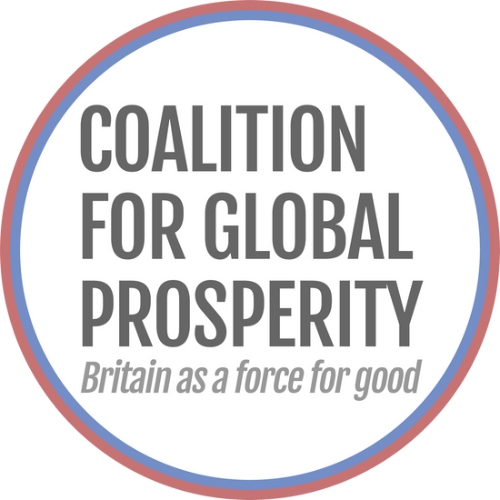
Political polarisation in the social media age
Mario Creatura
Conservative parliamentary candidate. He is currently a Director at a communications agency, and was previously a Special Adviser in 10 Downing Street, serving Prime Minister Theresa May from 2017 until 2019.
For weeks, the Prime Minister had been working hard to convince the Labour Leader that his views on Syria were being taken seriously. Evidence was supplied, briefings took place, a Commons motion was even amended. The hope was that when it came to it the Opposition would back the Government on this crucial aspect of foreign policy.
Yet despite suggestions to the contrary, in August 2013 Ed Miliband chose to sabotage David Cameron’s vote for possible UK military action to deter Bashar al-Assad’s use of chemical weapons. The Coalition Government lost by 285 votes to 272.
The Opposition are rarely given the opportunity to defeat a Government – by rushing to seize their chance, they opted for the short-term sugar rush of isolationism. Not only were there dire geopolitical consequences but, perhaps more pervasively, trust was eviscerated.
Whether between the two party leaders or among US, UK and European allies – expected international roles built over centuries were weakened.
The world has changed considerably in the last decade.
10 years ago just 1.72 billion or 24 per cent of the globe was active on social media. There are now 4.88 billion regular users – almost 61 per cent of our total population. With it came a total destabilisation of the anticipated mores of the political arena.
Gaining popularity when trust in establishment organisations was already in decline, and now it has added fuel to an already accelerating trend. We generally follow those we agree with. We are exposed to less and less diversity of thought, our values and principles reinforced by like-minded accounts, narrowing our world view.
Social media has contributed to a chilling effect on our view of institutions. The latest MHP Polarisation Tracker revealed that three quarters of voters believe ‘people in power often work together to frustrate the will of the people,’ while two thirds believe ‘mainstream media aren’t really independent, they work together to push the elite’s political agenda.’
As with any enfranchising technology, there are those who seek to use it for good and those for ill – the same tool that made possible the 2011 Arab Spring, also amplified populist rhetoric and further stoked the division that led to the 2021 US Capitol attack.
Whether domestic or international, the influence of digital platforms incentivises political polarisation. It often rewards brash confidence and simplistic narratives, algorithmically punishing nuance, moderation and complexity. It magnifies the intensity of political feeling, which should require today’s legislators to be more sophisticated and adept at handling this new electoral dynamic.
Whilst some responsible policymakers get to grips with their duty to use digital channels with care, the role of social media in shaping public opinion has of course been seized upon by hostile state actors. A wealth of accessible, individualised data and behavioural insights make it all too tempting to wield creative content to suit nefarious ends.
A foundational tactic in disinformation manipulation has been the use of the simple meme. Extremism expert Todd C. Helmus notes that ‘Russia used memes to target the 2016 US election; China used memes to target protesters in Hong Kong; and those seeking to question the efficacy of vaccines for coronavirus disease 2019 used memes as a favourite tool.’
Then, along comes Artificial Intelligence – once locked in the realm of science fiction, it has in recent years begun taking its tentative first steps into mainstream use and with it a whole host of challenges.
As night follows day, alongside the creative opportunities of AI comes ‘deepfake’: digitally altered footage in which a face has been artificially modified to appear as someone else, often saying or doing something that the ‘owner’ of the stolen identity never intended.
In July 2022 social media users claimed a video of President Joe Biden posted by the Democratic Party was a deepfake. It took the White House to officially engage to debunk the conspiracy theory – but this relatively minor event highlights a much larger, blood-chilling concern.
Knowing about deepfake, could reality be ignored if it is incompatible with held views? What if it was fake, but said something offensive? What if it was believed? Could a well-made deepfake spread fear and panic among the populace, or other world leaders? Is it conceivable that this forces a response or is used as a pretence for retaliation?
This is not a baseless fear, among others the European Parliament is taking it very seriously: ‘An assessment of the risks associated with deepfakes shows that they can be psychological, financial and societal in nature, and their impacts can range from the individual to the societal level.’
The subverting influence of social media, the unpredictable rise of AI and deepfakes, the weakening of respect
in our institutions – responding to these era-defining challenges may seem daunting, yet I believe it provides the current and next generation of political leaders with a singular overarching mission: the restoration of trust.
Those of us wanting to serve must acknowledge our role in stabilising our world order. Doing that means protecting the values of freedom, democracy and the rule of law. It means standing with our national and international allies to defend these core principles, robustly opposing anyone or anything that endangers them.
History teaches us that when our liberal democracies are threatened we rise to the challenge. The arena may now include the digital realm, but the fundamental call to arms is the same: we must work to hold together an increasingly sceptical world with strong values, deep relationships and the unbridled trust that we will build a more peaceful, more prosperous planet.

